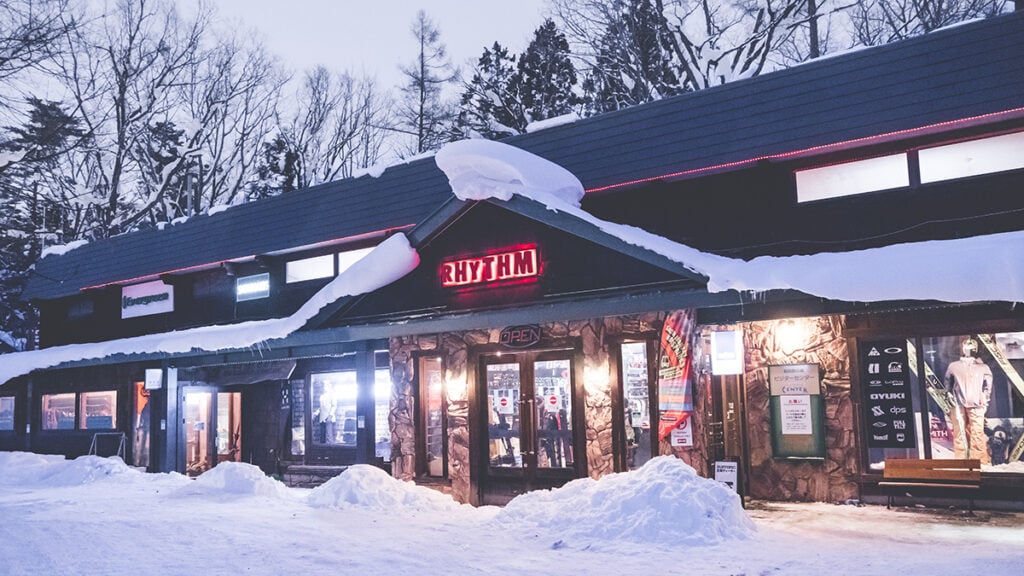Picking a binding is a personal process but there are some practical considerations to think about before committing to a boot to ski interface. A few things to keep in mind are the types of riding you will be doing, the kind of boot you have, and where you will be doing most of your riding. We’ve broken down the pros and cons of four types of ski bindings to help you make the right choice. Once you’ve read the list come and visit us at Rhythm Summit in Niseko or Rhythm Hakuba to try some different styles before you buy!
Alpine Ski Bindings. Perfect for Resort Riding.
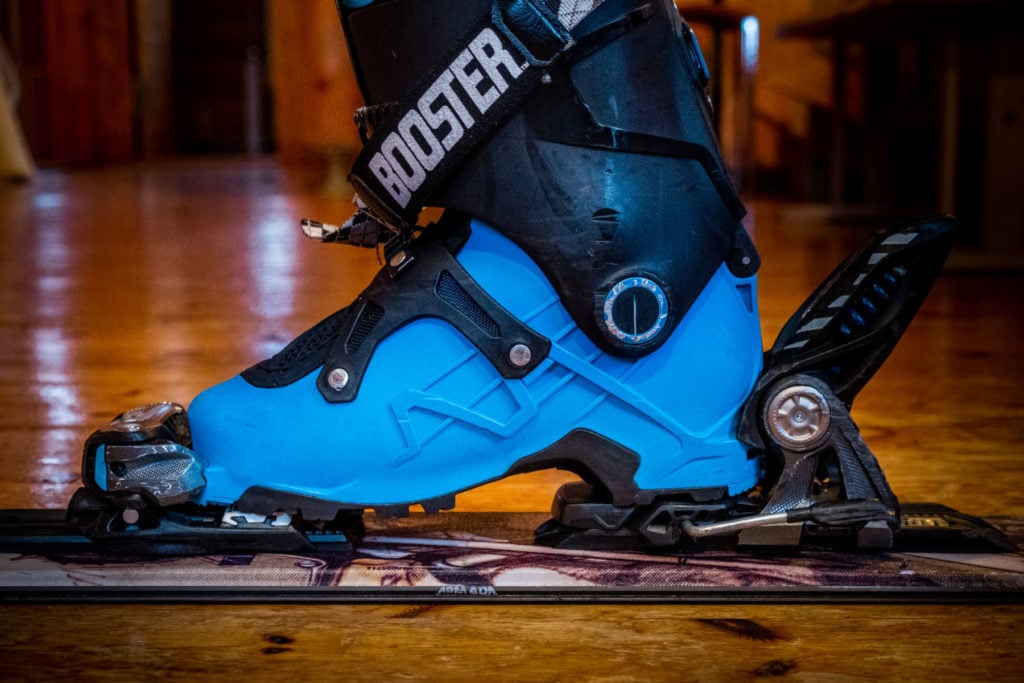
Pros
1. Perfect for lift access riding.
2. An alpine binding allows the ski to flex naturally under the boot unlike a frame binding (more on that later).
3. On a similar note, the heel piece can adapt to the boot as the ski flexes and “shortens” or “lengthens” that distance between the heel and toe pieces. This works in conjunction with the natural flex of the ski mentioned above.
Cons
1. There aren’t any cons to alpine bindings except that you can’t use these types of bindings in the backcountry unless you bootpack or opt for snowshoes.
Touring Occasionally? Consider Buying Frame Bindings.
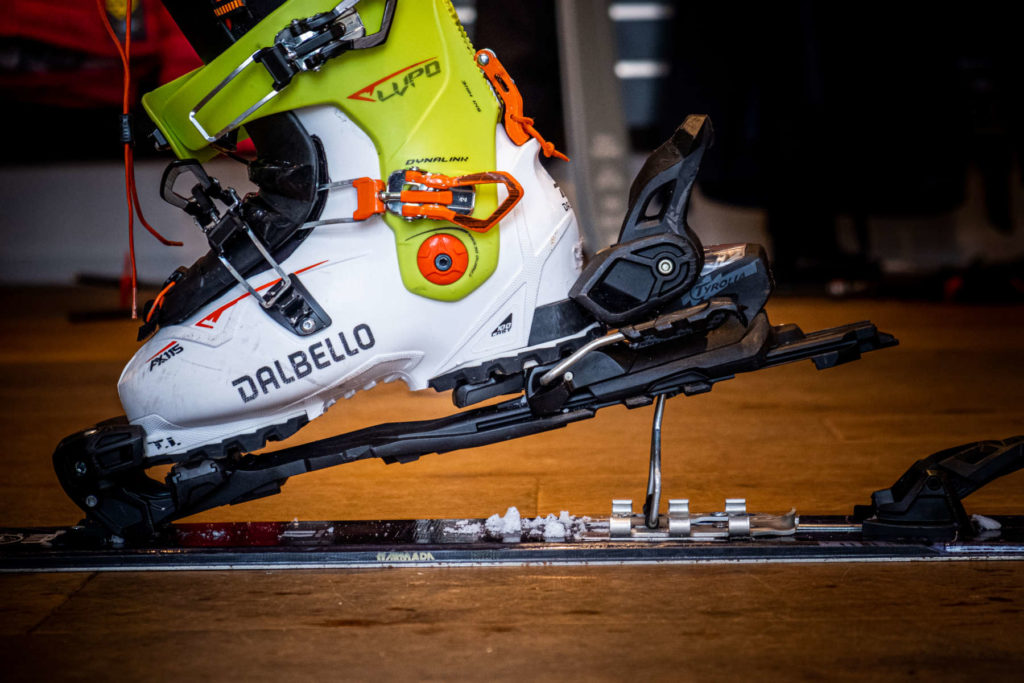
Pros
1. The binding can unlock under the heel to allow walking via a pivot in front of the toe.
2. Most frame bindings are measured and rated by DIN (Deutsches Institut für Normung), the German Institute for Standardization, which is a universal measurement for release forces for the binding. This means they have consistent, reliable release values in the event of a crash. Tech Alpine Touring bindings do not commonly have this certification.
3. Frame setups suit those who mainly ride resort but want to go backcountry occasionally on the same ski+binding setup.
Cons
1. Weight is the number one con. These bindings are burly, which mean epic downhill performance at the expense of uphill ease.
2 The rigid frame running from toe to heel can create a dead spot on the ski under the binding where the ski cannot flex.
3 The pivot point while touring is in front of the toe, versus at the toe for a tech binding to tech boot system, which makes skinning slightly more difficult.
Getting Serious? Tech Alpine Touring Bindings Are For You!
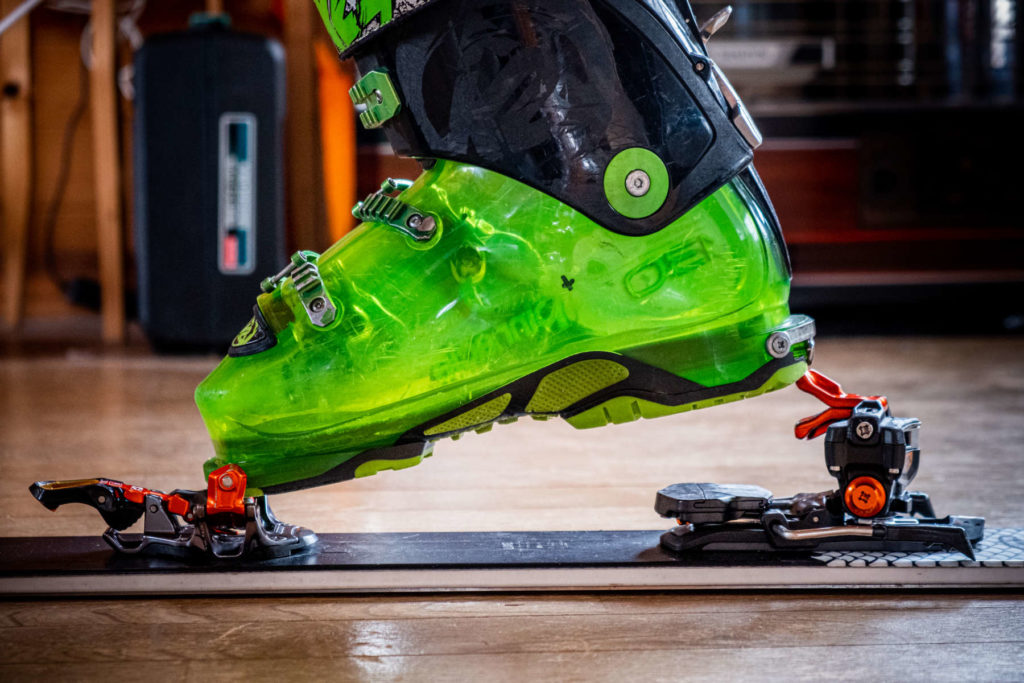
Pros
1. The overall weight of a tech binding can be up to half the weight of the lightest frame bindings and if you imagine the number of times you will be hauling the skis uphill on a single ski tour, you can imagine the energy savings.
2. The heel piece on a tech binding stays on the ski during the uphill, improving efficiency compared to a frame binding, where the whole frame is lifted with each step.
3 Separate toe and heel pieces also allow the ski to flex naturally under the binding.
Cons
1. Powder can quickly ice up inside the toe and heel piece of a tech binding on the uphill, so “cleaning” options should be considered. For example, some manufacturers have designed their toe pieces to allow a ski pole tip to push ice buildup out through the other side.
2. Not all bindings are rated by DIN.
3. Tech bindings require a special boot with toe and heel compatibility with pins on the bindings.
Hybrid Bindings – The Best of Both Worlds.
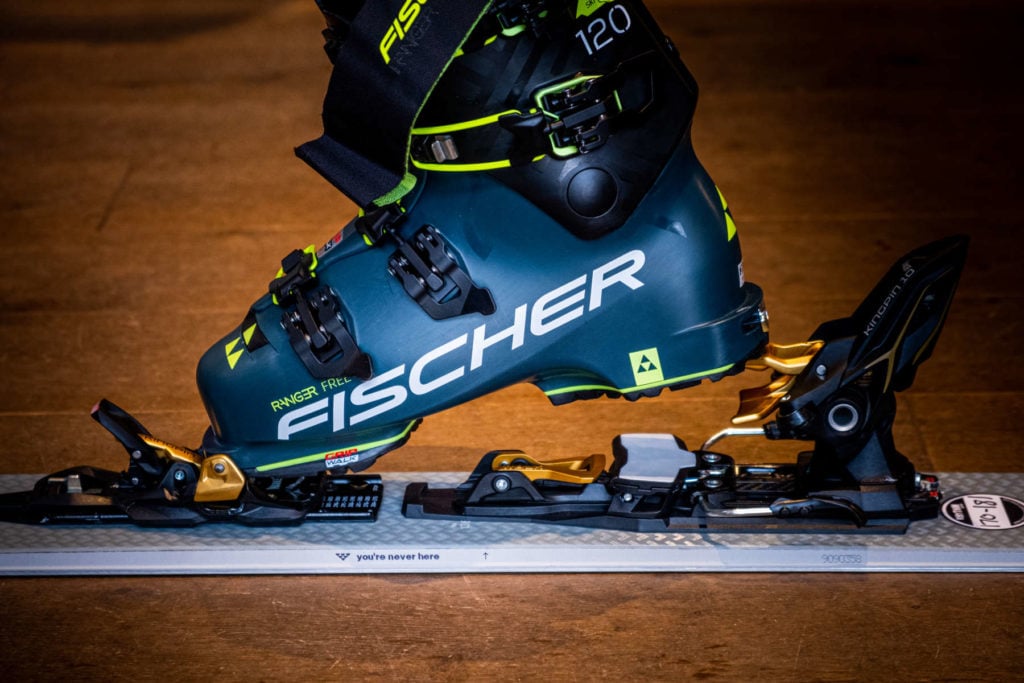
Pros
1. Hybrid bindings have all the pros of a tech binding but with a more secure heel, which functions like a traditional alpine heel.
2. Some hybrid bindings have a DIN certification. It is important to realize that there is a separate alpine DIN certification and AT DIN certification. The only hybrid style binding with an alpine certification at the time of writing is the Salomon S/Lab Shift MNC.
3. Hybrid bindings generally don’t have the tight tolerances of most tech bindings, which means they are a bit more robust to rough handling in the backcountry.
Cons
1. Hybrid bindings are heavier than tech bindings.
2. Just like tech bindings, hybrid bindings require a special boot with toe and heel compatibility.
3. The boot compatibility of hybrid bindings can be quite specific. Look up the compatibility of the boot+binding pair you are planning to ride before getting on snow.

